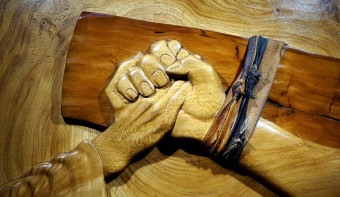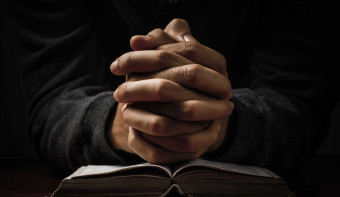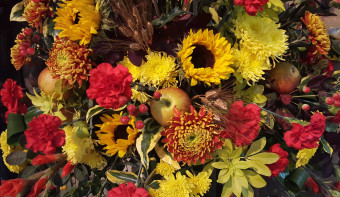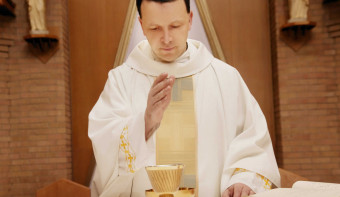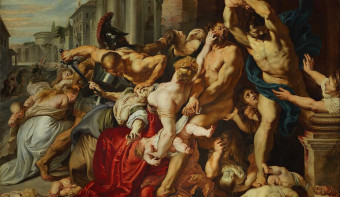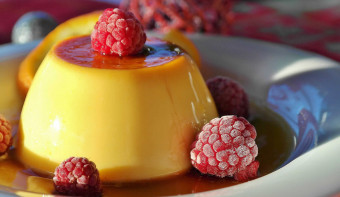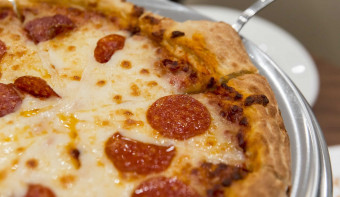About Easter
| How long until Easter? | |||
|---|---|---|---|
| Easter . | |||
| Dates of Easter | |||
|
2026 USA
Sunday, April 5th
2025 USA
Sunday, April 20th
2024 USA
Sunday, March 31st
2023 USA
Sunday, April 9th
2022 USA
Sunday, April 17th
| |||
| Summary | |||
| Easter Sunday is the most important date in the Christian church. In the bible, it is the day when Mary Magdalene found that an empty tomb in the cave in which Jesus had been placed. | |||
| Easter in other countries | |||
| Easter internationally | |||
This annual Christian holiday is linked to Good Friday, and commemorates the resurrection of Jesus Christ from the dead three days after He was crucified. Irrespective of denomination, there are many Easter-time traditions such as Easter egg hunts, Easter egg decoration, and of course a visit by the famous Easter Bunny, who delivers candy and chocolate eggs to children on Easter Sunday morning!
When is Easter Sunday?
Easter Sunday is the most important date in the Christian church.
In the bible, it is the day when Mary Magdalene found that an empty tomb in the cave in which Jesus had been placed following his death by crucifixion on the previous Friday.
It signifies the end of the 40 days of Lent, meaning Christians who gave up something during lent to signify Jesus' time in the wilderness, can indulge themselves again.
Easter Sunday is also when church bells will be rung again, having been silent during Lent.
Why is it called Easter?
According to some scholars such as Venerable Bede, the name Easter is derived from 'Ostara' or 'Eostre', a pagan goddess of fertility, whose feast was celebrated on the Vernal Equinox. The word East is also derived from her names, as is Oestrogen, the female hormone. In Saxon culture, the Hare was sacred to Ostara and the modern tradition of the Easter Bunny is a distant echo of that.
However, In most languages other than English and German, the holiday's name is derived from Pesach, the Hebrew name of Passover, a Jewish holiday to which the Christian Easter is intimately linked.
Easter depends on Passover not only for much of its symbolic meaning but also for its position in the calendar. Read more about the date of Easter.
Easter traditions
White lilies are the traditional flowers of Easter and are held or worn by many in churches all over the world as symbols of the resurrection of Jesus Christ.
Easter Bunny
The Easter Bunny is now an established part of the Easter traditions. In Europe and America, the Easter Bunny visits the garden of children leaving chocolate eggs and treats for the children to find on Easter Egg hunts.
Rabbits and hares don't have any direct connection to any Christian tradition and it is interesting to note that the pagan goddess, Ostara was always traditionally accompanied by a hare. The modern tradition derives from a German custom that was first recorded in the 16th century. It may seem strange for a rabbit to be laying eggs, but as eggs were part of the foods banned during Lent, then the reintroduction of eggs would have been a welcome treat, no matter how they arrived in the garden.
It was once thought that hares could give birth without conceiving, which may have made them a way of explaining the birth of Jesus to the Virgin Mary. It is also said that the sight of Rabbits appearing from their underground burrows is a reminder of Jesus appearing from the tomb after his resurrection on Easter morning.
An Easter cuckoo substitutes for the Easter bunny in Switzerland. In Switzerland, the legend goes that a cuckoo bird is responsible for bringing Easter eggs on the holy occasion. These birds frequently lay their eggs in the nests of other birds, and this behavior might have inspired this notion. Also, in Switzerland, the cuckoo bird represents rebirth and growth.
Lamb
On Easter Sunday, the traditional meat for dinner is lamb. The lamb was a sacrifice during the Jewish Passover, and it became a symbol for Jesus. It is also seasonal as Spring lamb is particularly tender and noted for its subtle flavor.
Easter Clothes
An old superstition claimed that wearing new clothing on Easter will bring you luck for the remainder of the year. In fact, it was so generally accepted that wealthy New Yorkers would literally parade after attending Easter service at upscale midtown churches. This tradition inspired the Easter Parade and Bonnet Festival, now held in New York City every Easter.
Easter bonfires
Before the spread of Christianity in the area, Germanic tribes presumably used the pagan rite of building an Easter bonfire. It was intended to usher in spring and relieve the winter's gloom. The fact that the ashes were dispersed throughout the meadows and subsequently nourished the soil also made it a symbol of fertility.
Easter Eggs
The first chocolate egg in the UK was created in Bristol in 1873. The Fry family of Bristol operated the largest chocolate factory in the world throughout the 19th century, producing the first chocolate egg in 1873. Two years later, in 1875, Cadbury’s made its first Easter egg.
Egg Rolling
The yearly egg roll custom at the White House was started in 1878 by President Rutherford Hayes.
Following his administration, First Families continued this Easter ritual. The Egg Rolls have altered and evolved over time, considering the games and amusements that were popular at different times.
Easter Quiz
Put your Easter knowledge to the test with our fun and challenging multiple choice quiz! From the history of Easter to the traditions and symbols associated with the holiday, this quiz covers it all. With 10 questions ranging from easy to hard, you’re sure to learn something new and have a hoppy time along the way! So, grab some chocolate eggs, gather your family and friends, and see who comes out on top as the ultimate Easter ‘eggs’pert!
Easter Traditions Around the World
Austria
If you are in Austria on Easter Sunday watch out for egg fights with hard-boiled eggs. In these battles, one opponent holds his egg and the other opponent hits it with his egg from above. First the tips and then the bottoms. The winner gets the egg of the other player.
On Easter Sunday, Austrian parents hide Easter nests for their children. These Easter nests contain chocolate bunnies, colored eggs and sweets. The nests are hidden somewhere in the garden or in the house or wherever it’s safe for kids to roam around and search.
Similar Observances
National Day of Prayer
Read More
Schwenkfelder Thanksgiving
Read More
Clergy Appreciation Day
Read More
Other Observances on April 5th 2026
A Drop of Water Is a Grain of Gold
Read More
National Deep Dish Pizza Day 🍕
Read More


